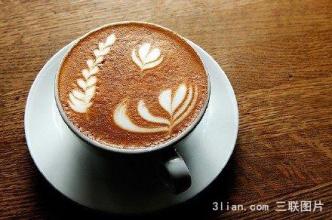The best coffee in the world
The blending of drip filter coffee: mocha-Java coffee, people can't help thinking that blended coffee is as old as home-made coffee. A thick, average-quality "Java coffee" combined with a moderate, floral, more acidic "mocha", which was the only two kinds of coffee at the time. Is it just a habit to mix these two kinds of coffee together? Or is it because this combination can improve their taste? In any case, the combination of these two kinds of coffee can make coffee drinks with richer export flavor than either of them. Even with the simple coffee roasting and making tools at that time, it was incredible to produce such a rich flavor of "mocha-Java" blended coffee. It is not difficult to make a very good coffee from two very good coffees. The purpose of mixing coffee commercially is to make coffee drinks with quite good export taste from several kinds of coffee that are not of very good quality. The original mocha-Java coffee is made of Yemeni mocha coffee and Indonesian Java coffee. But you can usually use any kind of coffee from Indonesia and mix it with any kind of coffee from Ethiopia or Yemen. The usual blending ratio is one-to-one; or there are slightly more coffee beans in Indonesia, such as 55:45. The very good result we have spelled out is a combination of Hirazi or Dhamari coffee beans from Yemen (or "Hara" beans from Ethiopia) and Batak Mandheling (washed beans) or Sulawesi Toraja (washed beans) from Sumatra.
Espresso with several of my favorite decaf coffees if you need decaf, prepare some water-processed Brazilian decaf beans. Use 50% of this coffee bean, plus some other coffee beans with different flavors. If you want coffee with almost no caffeine, you can choose one of the following combinations: 50% Brazilian water-treated low-caffeinated coffee beans, 50% water-treated Sumatra low-caffeinated coffee beans, 50% Brazilian water-treated low-caffeinated coffee beans, and 25% Mexican Esmeralda low-caffeinated beans, 25% water-processed Sumatra low-caffeinated beans. We also have two kinds of mixed Italian coffee beans for customers to bake by themselves. Ethiopia's low-caffeine beans are also suitable for making espresso. Try a blend of 50% water-treated Sumatran low-caffeine beans and 50% Ethiopian low-caffeinated beans.
Kafa Coffee Note: we are here to introduce the blending of coffee is not to advocate everyone to mix their own coffee, only to introduce the relevant knowledge and general concepts. These just don't help you mix your own coffee, but just know something about it. As the organic structure of coffee is very complex, its blending is similar to that of traditional Chinese medicine, and it is difficult to finish well without enough experience. Therefore, we do not advocate that everyone engage in coffee blending. It is best to leave this work to experienced traditional Italian coffee companies. At the same time, we should also pay attention to the distinction between "traditional" coffee enterprises and "new" coffee enterprises. As Italian coffee has become popular all over the world, many enterprises and individuals who did not have the basis of coffee processing technology have now begun to process Italian coffee. But their products are difficult to compare with the original enterprise products. Mostly for the use of "Italian coffee"

Important Notice :
前街咖啡 FrontStreet Coffee has moved to new addredd:
FrontStreet Coffee Address: 315,Donghua East Road,GuangZhou
Tel:020 38364473
- Prev

Can coffee beans from a single origin or single roasting degree be blended?
Before mixing any coffee, first understand the flavor characteristics of each coffee, and at least know in your mind that the coffee you want to mix will taste like no single coffee can achieve. It would be a shame if the blend didn't taste better than one or more of them. It's better not to match. What qualities do you use?
- Next

Why do you mix coffee? coffee usually doesn't mix at 1:1.
Blended coffee usually does not take the 1:1 blending ratio, because this may suppress each other's unique flavor, so the blending must be primary and secondary in order to produce a better taste than a single coffee. If you want the coffee to taste complex and changeable, you can reduce the proportion of raw beans, and vice versa. Blending coffee depends on constantly trying to test the cup, so before blending
Related
- Does Rose Summer choose Blue, Green or Red? Detailed explanation of Rose Summer Coffee plots and Classification in Panamanian Jade Manor
- What is the difference between the origin, producing area, processing plant, cooperative and manor of coffee beans?
- How fine does the espresso powder fit? how to grind the espresso?
- Sca coffee roasting degree color card coffee roasting degree 8 roasting color values what do you mean?
- The practice of lattes: how to make lattes at home
- Introduction to Indonesian Fine Coffee beans-- Java Coffee producing area of Indonesian Arabica Coffee
- How much will the flavor of light and medium roasted rose summer be expressed? What baking level is rose summer suitable for?
- Introduction to the characteristics of washing, sun-drying or wet-planing coffee commonly used in Mantenin, Indonesia
- Price characteristics of Arabica Coffee Bean Starbucks introduction to Manning Coffee Bean Taste producing area Variety Manor
- What is the authentic Yega flavor? What are the flavor characteristics of the really excellent Yejasuffi coffee beans?

